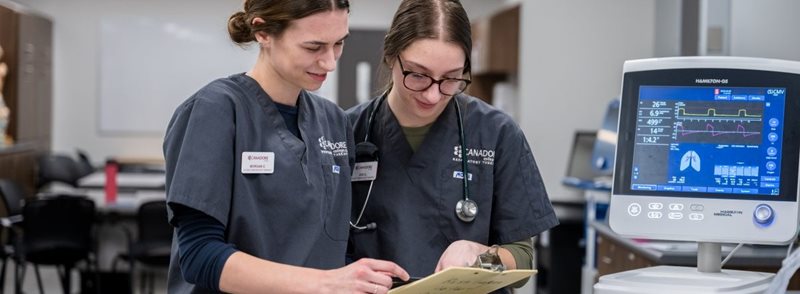» What is Interprofessional Education (IPE)?
-
» IPE at Canadore
At Canadore College, we are creating innovative and interactive opportunities to bring students and faculty of different professions together. These IPE experiences take place in diverse settings (e.g., classrooms, labs, and workplaces) and learning objectives range in breadth and depth depending on the goals for each initiative. IPE experiences are often (but not always) experiential learning activities. To learn more, please visit our Experiential Learning page.
Members of Canadore’s Faculty Interprofessional Education Committee (FIPEC) provide leadership to support the planning, delivery, and documentation of opportunities for students to develop their interprofessional knowledge, skills, and attitudes to engage and lead in a collaborative, holistic workplace. Generally, student experiences fall under one the following categories:
-
➜ Exposure:
-
- Learning activities are primarily knowledge-based
- Activities focus on describing roles and responsibilities and demonstrating awareness
- Activities are usually shorter in duration
-
-
➜ Immersion:
-
- Students from various fields of study collaborate, make decisions, and problem solve together, usually in simulated or case-based environments
- Activities incorporate higher levels of interaction between program groups
- Activities are usually longer in duration
-
-
➜ Mastery:
-
- Learning activities are complex and highly integrative
- Interprofessional relationships are built through team decision-making
- Duration of activities are guided by the scope of the collaborative work
-
IPE Competency Domains for Health and Human Services
The Canadian Interprofessional Health Collaborative Competency Framework for Advancing Collaboration (2024) lists six competency domains essential for collaborative practice in healthcare:
Foster purposeful relationships and promote inclusivity in care/service delivery.
Ensure clear and respectful communication among team members.
Understand and negotiate individual and team roles effectively.
Optimize team efficiency and effectiveness towards shared goals.
Address differences and disagreements constructively and maintain team cohesion and relationships.
Promote shared decision-making and accountability within the team.
Canadore’s FIPEC uses this competency framework to guide the planning and delivery of learning activities for students from diverse program areas.

